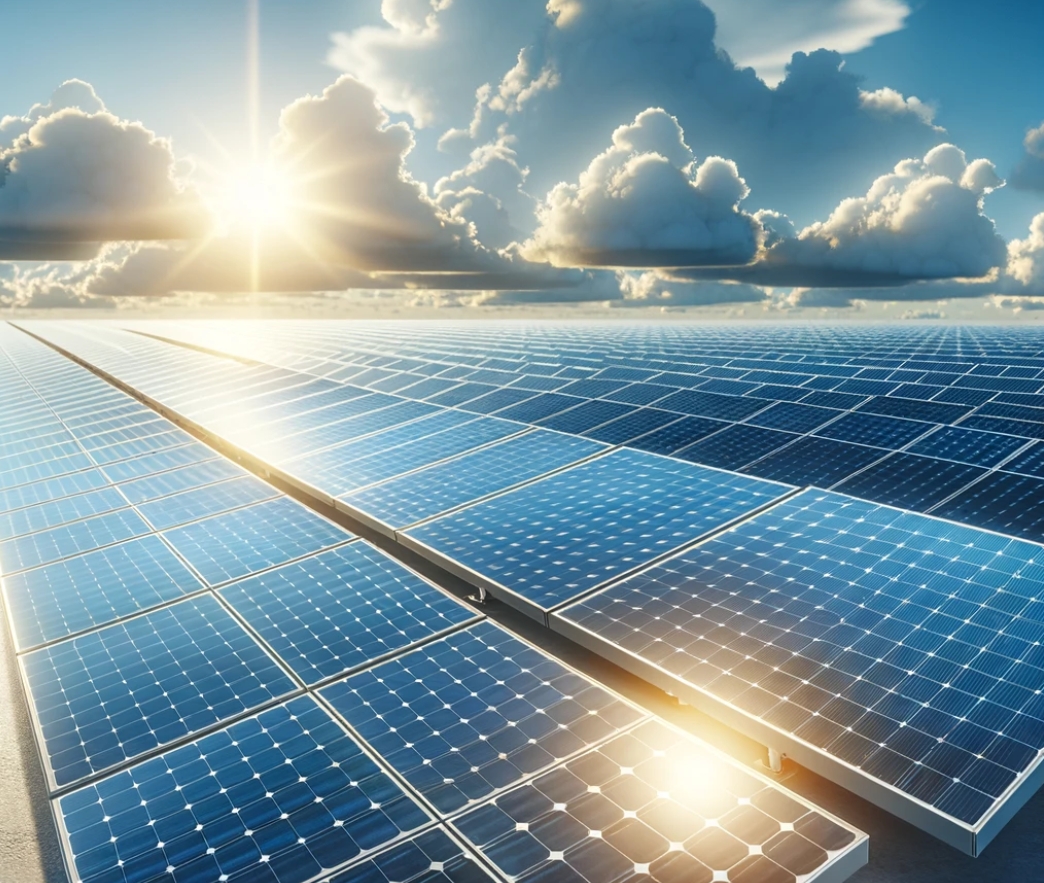Choosing the right type of solar panel is a critical decision when installing a solar energy system. There are mainly three types of solar panels commonly used in residential and commercial installations: monocrystalline, polycrystalline, and thin-film. Each type has its own advantages and disadvantages, and the best choice depends on various factors such as budget, space, efficiency needs, and aesthetic preferences.

1. Monocrystalline Solar Panels
- Appearance: Black hue; sleek appearance.
- Efficiency: Highest efficiency (around 15-20%); more effective in low-light conditions.
- Space: Require less space due to higher efficiency.
- Durability: Generally more durable with a longer lifespan.
- Cost: More expensive due to higher efficiency and durability.
- Best For: Those who need maximum efficiency and have limited space; suitable for residential roofs.
2. Polycrystalline Solar Panels
- Appearance: Blue hue; less uniform in appearance.
- Efficiency: Slightly lower efficiency (around 13-16%) compared to monocrystalline.
- Space: Require more space to generate the same amount of power as monocrystalline.
- Durability: Slightly less durable than monocrystalline but still reliable.
- Cost: Less expensive than monocrystalline; a good balance between cost and efficiency.
- Best For: Budget-conscious consumers who have more space for installation.
3. Thin-Film Solar Panels
- Appearance: Thin and flexible panels; low-profile aesthetics.
- Efficiency: Lower efficiency (around 10-13%); varies with the material used.
- Space: Requires the most space due to lower efficiency.
- Durability: Less durable; shorter lifespan compared to crystalline panels.
- Cost: Generally the cheapest option; cost-effective for large-scale installations.
- Best For: Large commercial projects; suitable for surfaces where weight is a concern.
Factors to Consider in Your Decision
- Budget: How much you’re willing to invest upfront.
- Space Availability: The area you have available for installation.
- Energy Needs: Your household or business energy consumption.
- Local Climate: Some panels perform better in different climates and lighting conditions.
- Aesthetic Preference: How important the look of the panels is to you.
- Long-Term Plans: Consider future maintenance and potential moving plans.
Conclusion
- Efficiency vs. Cost: Monocrystalline panels offer higher efficiency but at a higher cost. Polycrystalline panels provide a middle ground. Thin-film is cost-effective for large areas but less efficient.
- Space Constraints: If space is limited, monocrystalline or higher efficiency polycrystalline panels are preferable.
- Installation Type: Residential, commercial, or portable setups may have different ideal choices.
It’s always a good idea to consult with a solar energy expert who can provide detailed advice based on your specific situation, energy goals, and local conditions. They can also help calculate the return on investment for each type, considering the long-term energy savings and potential incentives.
